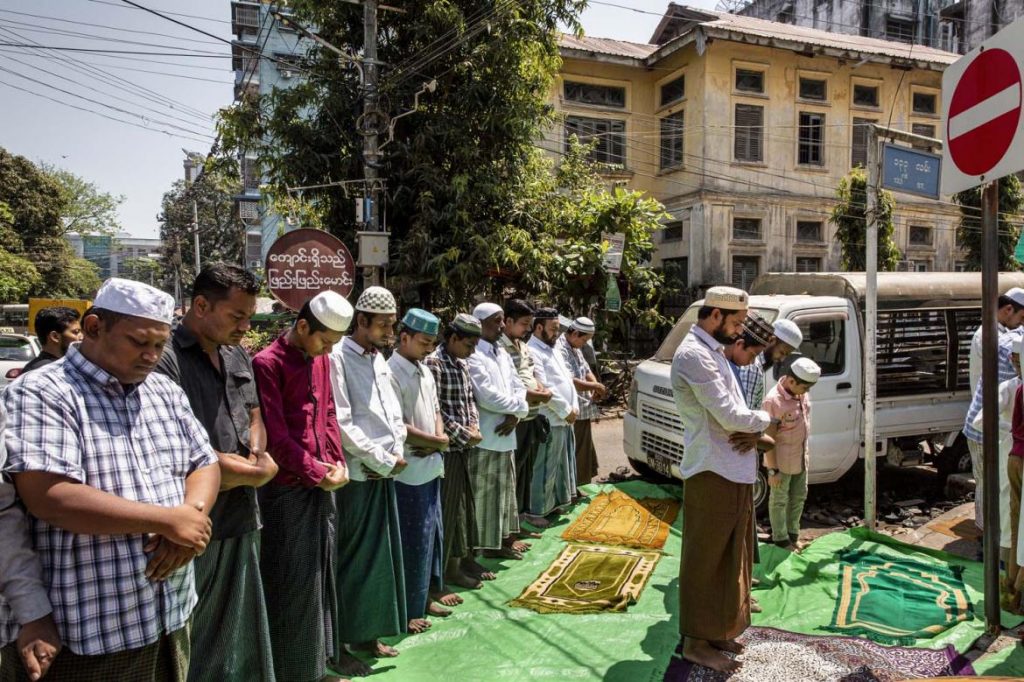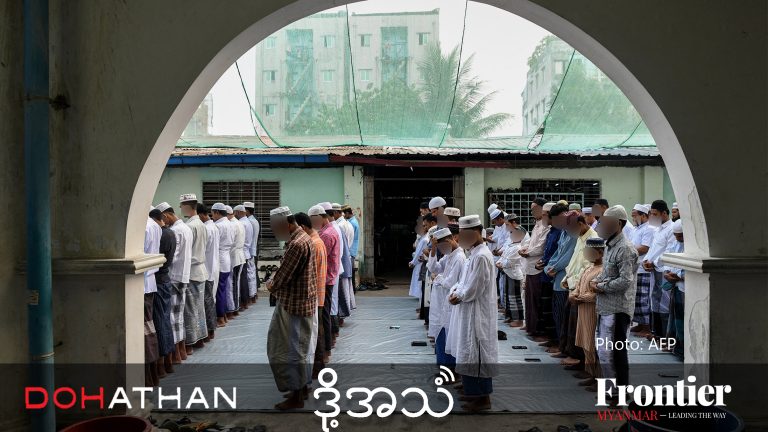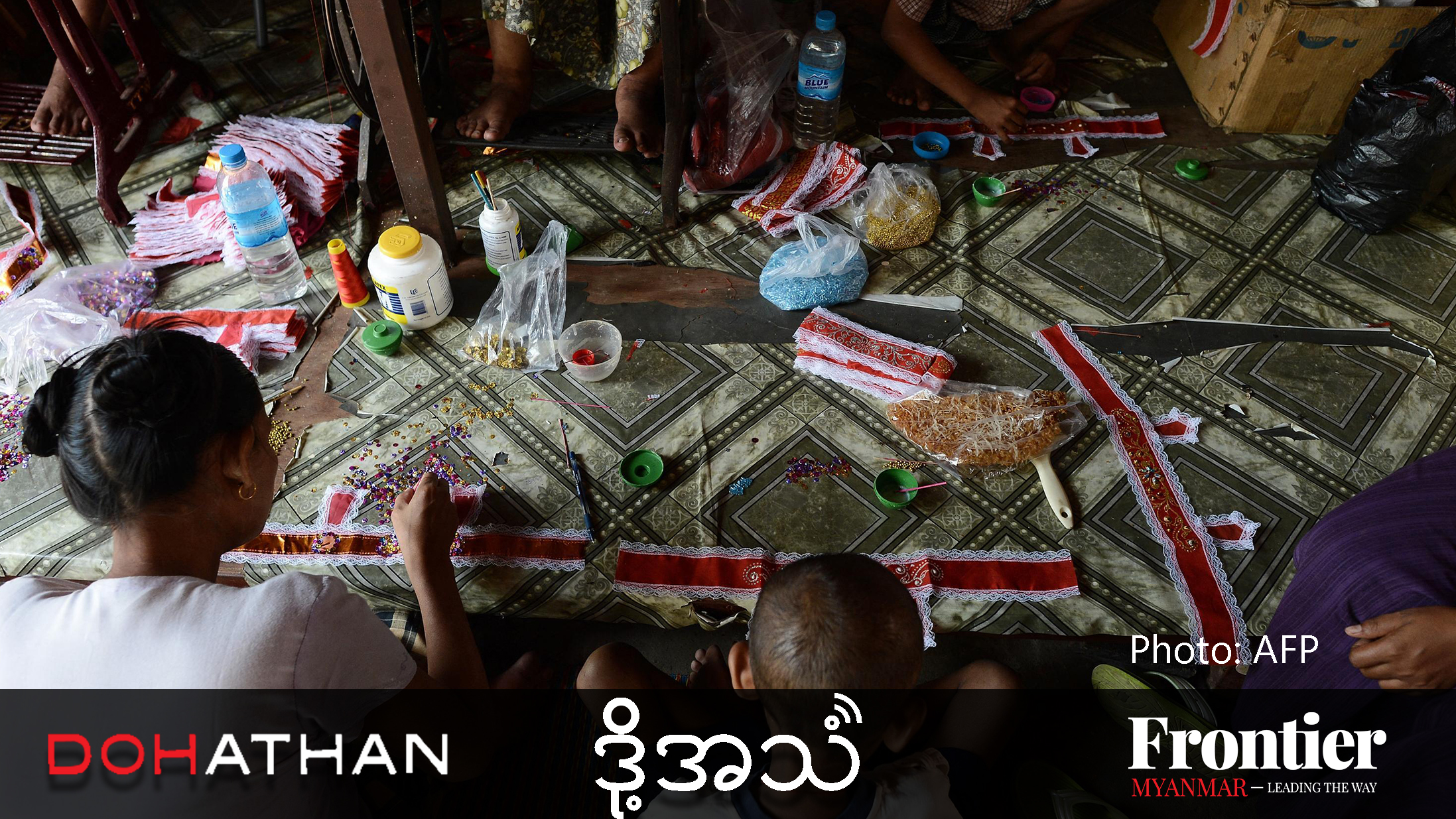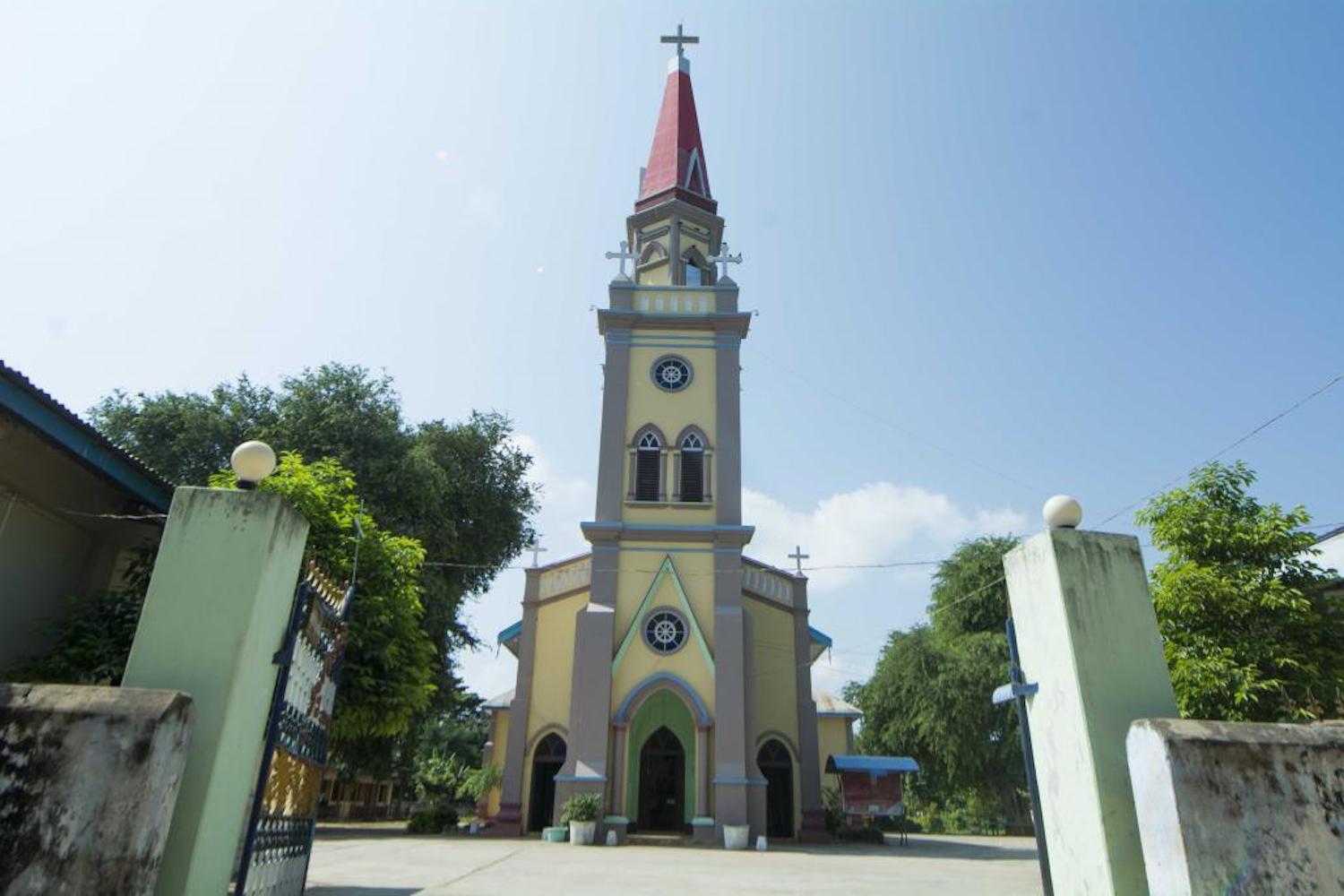A committee trying to resurrect shuttered and burned-down mosques has been frustrated by government bureaucracy, leaving many Muslim communities without local places of worship.
By EAINT THET SU | FRONTIER
ANTI-MUSLIM violence has ebbed and flowed in Myanmar since 2012, but it has left a physical trace. Even in communities where some measure of trust has been rebuilt between Buddhists and Muslims, mosques and madrassas remain shuttered or moulder as burned-down ruins. The historic Kangyi mosque in the market town of Yamethin in Mandalay Region, destroyed by a nationalist mob in 2014, remains a mess of brick rubble and wooden beams. Sixty kilometres further north in Meiktila, the Mingalar Zay Yone madrassa is today a charred ruin, six years after it was torched and its young pupils brutally killed.
The refusal of the government to permit or facilitate the re-opening and rebuilding of these structures has compounded an existing shortage of buildings for Islamic religious practice. Tight, but selectively enforced, regulations on the erection and renovation of religious structures mean Myanmar’s Muslims – who are drawn from diverse ethno-linguistic groups, such as the ethnic Tamil Cholia and the ethnic Chinese Panthay – are often deprived of places to worship in their neighbourhoods.
This situation has prompted a committee of Muslim community leaders, formed late last year, to advocate for more than 60 mosques and madrassas to be reopened across the country. But for all its efforts, the Committee for the Restoration of Destroyed and Prohibited Mosques in Myanmar has been sent from one branch of government to another, with seemingly no one in authority willing to take responsibility for addressing the problem.
Because of the shortage of mosques, those that continue to operate in downtown Yangon are severely crowded during Friday prayers with people from outlying townships, which lack Islamic places of worship. At noon on Fridays in South Dagon Township in the north-east of the city, Muslim men and women in their finest clothing can be seen piling into trucks that take them to mosques in Thaketa and Thingangyun townships.
Support independent journalism in Myanmar. Sign up to be a Frontier member.
The Ma-U-Kone mosque on 133rd street in Tarmwe Township is so crowded on Fridays that prayers must happen in two consecutive batches. Even then, visitors spill out onto the pavement. U Maung Maung Myint, the secretary of the mosque’s board of trustees, told Frontier, “We want to erect canvas over the pavement to provide shade for the worshipers, but the township administration won’t give permission even for such a small change, let alone for us building a new mosque.”
The downtown mosques mostly date from the British colonial era, when Muslims – most of whom were migrants from the Indian subcontinent – made up a much larger proportion of the city’s population than today, and when establishing mosques faced little official obstruction. The townships established since independence in the outer suburbs of Yangon were built largely without mosques. Maung Maung Myint, who is also a member of the advocacy committee formed last year, said the committee had confirmed that no government had permitted the building of a new mosque since the 1960s. Frontier could not independently verify this claim.
Maung Maung Myint said renovations to religious structures require the agreement of the township’s Sangha Nayaka Committee, which is made up of Buddhist monks, as well as the signed consent of neighbours living five doors either side of the mosque. The construction materials in renovations must also be identical to the original fittings; a rotten wooden beam can only be replaced with wood.
These regulations have the combined effect of preventing Islamic structures from being built, expanded or repaired. However, they appear not to be universally applied or understood.
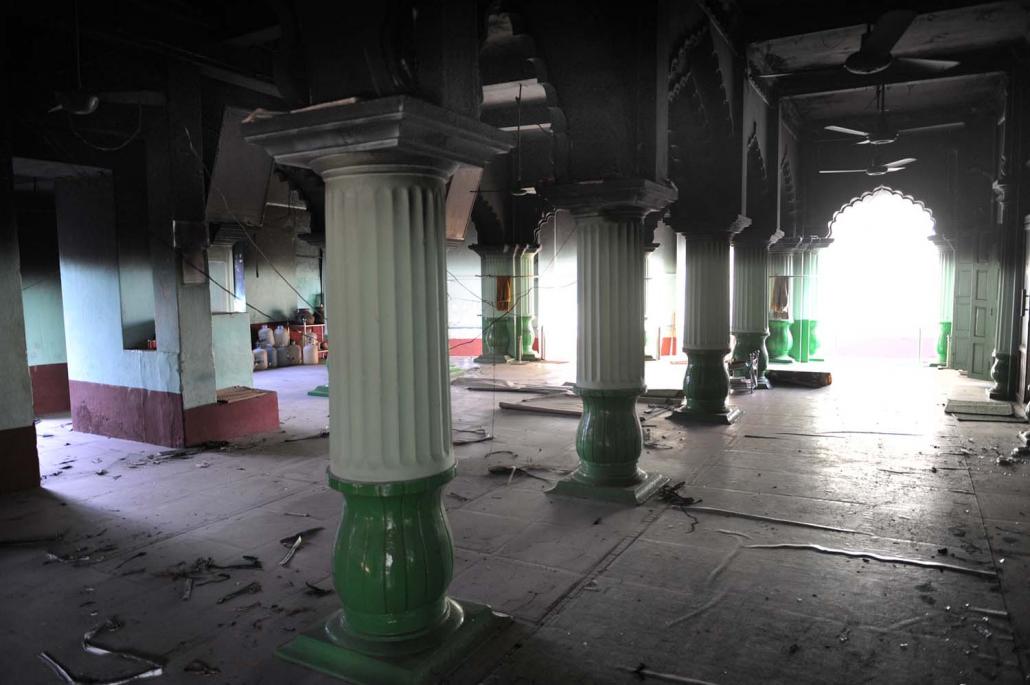
A mosque desecrated in anti-Muslim violence in Meiktila, Mandalay Region, in March 2013. (Steve Tickner | Frontier)
U Chit Ko Ko Lin, deputy administrator of Hlaing Tharyar Township, an industrial suburb in western Yangon, said “small renovations like fixing the roof of any religious building, whether Buddhist, Christian or Muslim, need the approval of the Sangha Nayaka Committee in the township and the approval from the township administration office. Bigger renovations like expanding the floorspace need district or state level government approval.”
But Chit Ko Ko Lin added, “I’ve never heard about needing approval from five neighbours on each side. Maybe it’s because I have only worked with Buddhist pagodas and monasteries in Hlaing Tharyar. They are usually far from houses.”
The Committee for the Restoration of Destroyed and Prohibited Mosques in Myanmar, which was formed in October 2019, has drawn up an initial list of 64 destroyed or shuttered mosques and madrassas in 11 states and regions that it says should be allowed to be rebuilt or re-opened. With the help of local residents, the elders on the committee also documented when each mosque or Islamic school was founded and when it was destroyed or forced to close.
Though most of the 64 structures were the victims of anti-Muslim violence, some had been destroyed in natural disasters or by accidental fires, with permission to restore them withheld thereafter. This includes the Sint Kuu mosque in Pyin Oo Lwin, which was toppled by an earthquake in 2012, and the Islamic School in Yangon’s Hlegu Township, which caught fire in 1975.
Maung Maung Myint said the committee had actually identified 170 structures, “but we could only verify the 64 because we have difficulties accessing states like Rakhine where there are still conflicts happening.”
Since October, the committee has sent 14 petition letters, copying President U Win Myint, State Counsellor Daw Aung San Suu Kyi, Minister for Religious Affairs and Culture U Aung Ko, the chief ministers of the states and regions where the structures are located, and the relevant MPs.
The letters explain the difficulties Muslims face in observing their religion, as well as the importance of reopening the mosques and madrassas for peace and reconciliation in Myanmar. They also draw attention to the poor state of many of the religious buildings still in use, where the official withholding of permission to conduct repairs endangers the lives of the community. The first letter read, “A madrassa on Thein Phyu Road, Mingalar Taung Nyunt Township [in Yangon] is kept up with stilts because its restoration has not been permitted. The students there have to study among these safety risks.”
The letters got no reply besides an invitation from the deputy permanent secretary of the religious affairs ministry to a meeting in Nay Pyi Taw on January 24, where the members of the committee were told that, since 2012, responsibility for the matter had been delegated to state and regional governments. The committee was told to request meetings with the chief ministers of the states and regions where the mosques are located.
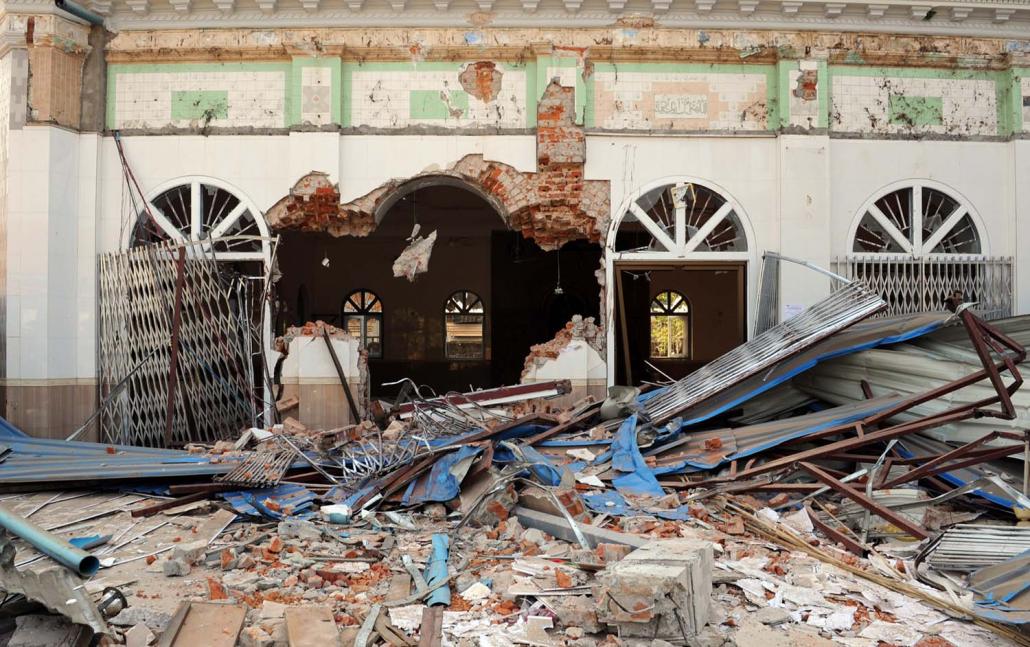
A mosque destroyed in religious rioting in Gyobingauk, Bago Region, in March 2013. (Steve Tickner | Frontier)
Maung Maung Myint said, “We sent the [meeting] request letters as recommended, but we have not received any responses yet.”
Appealing to township-level authorities prompted a similar degree of official evasion. “When we talk to township administrators, they direct us to the state and regional authorities, who in turn direct us to the Union government authorities,” Maung Maung Myint said.
The religious affairs ministry did not respond to multiple requests for comment.
Meanwhile, the boards of some of the institutions on the committee’s list have continued to individually petition local authorities. These include four madrassas in Thaketa Township’s Anawmar 1 ward, which have not reopened since police forced their closure on April 28, 2017, at the instigation of a nationalist mob who claimed that prayers were taking place illegally at the madrassas, which they said had only been approved for education.
U Tin Shwe, a board member of the 12th Street madrassa, said that, in the absence of a mosque in the neighbourhood, the Islamic School had been approved for the purposes of Islamic worship by General Ne Win’s military caretaker government in 1958, and that the post-1990s military junta had included it in a register of mosques. The board had sent letters making this case to Yangon Region Chief Minister U Phyo Min Thein, the township administrator and the Pyithu Hluttaw MP for Thaketa, U Wai Phyo Aung, from the National League for Democracy.
These letters had been to no avail. “Every authority we go to directs us to another and we do not know who is responsible,” Tin Shwe said. As for Wai Phyo Aung, who approved the decision to close the madrassas after meeting the nationalist mob, Tin Shwe said, “I cannot contact him.”
Maung Maung Myint believed the government’s stonewalling of the committee’s demands would only further undermine the reputation of the country, which has been tarnished by reports of anti-Muslim violence and persecution since the riots in Rakhine in 2012.
“Myanmar already has an international reputation for repressing religious freedom. This would only be confirmed when tourists come and see these mosques locked,” he said. “By reopening these mosques, the government would also save the country’s image.”


